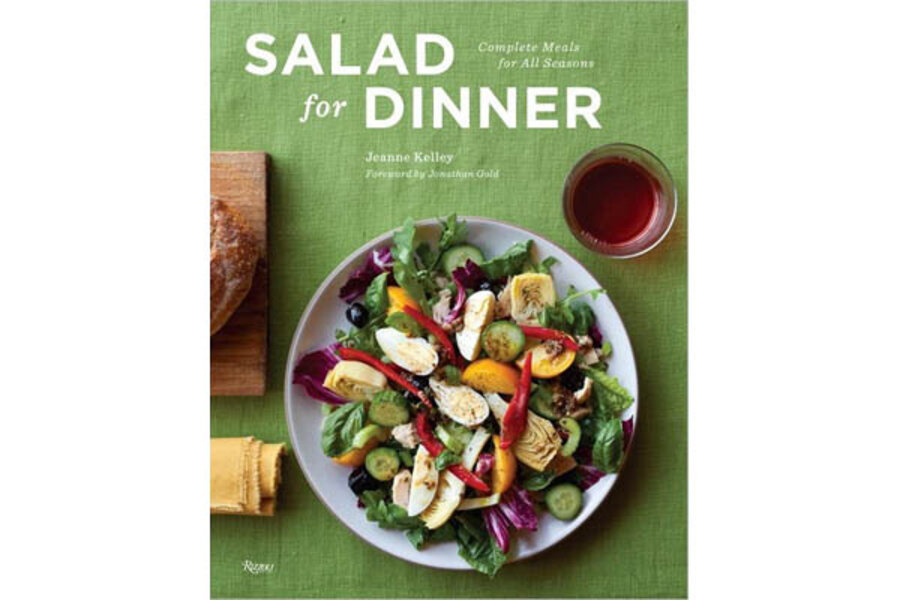Salad for Dinner
Loading...
At the end of the day, the question is: Will these salads sate the trencherman? Yes, they will, for they are of the tradition that begs another question: When does a salad stop being a salad and start being a plate of meat or fruit or cheese or beans or any or all?
Jeanne Kelley's salads, in Salad for Dinner, are of the variety that you-know-them-when-you-see-them: mixtures – though they can be just two ingredients – probably cold or room temp, probably at least a leaf of green in there somewhere, probably dressed and tossed, if also arranged.
It wouldn't be right to call the salads burly, but they do have a low center of gravity, however light on their worldly feet. And they are from all over the world – Argentina, Morocco, Indonesia, Korea, the Caribbean – running from vegetarian to seafood, poultry, and meat models. They are as simple as roasted tomatoes, arugula, and a cheese of choice and as involved as sautéed duck breast with kumquats, baby broccoli, dried cherries, and five-star vinaigrette.
There are takes on green goddess, Niçoise, and Cobb salads, and a good number of flat-out winners such as peas and orecchiette with mozzarella pearls and mint; a savory white anchovy, potato, and parsley item; and a salad of the Levantine grain freekeh, with apricots, grilled halloumi cheese, and zucchini. (Eighty-some recipes, including one for chocolate cream pie, because good things come to those who eat their vegetables.)
There are no edible flowers here, nor the truculently earthy, like spinach and liver. This is middle ground though, enticing middle ground, free of the hidebound, encouraging experimentation, and with enough opinions – Kelley would rather toss her salad with broken pencils than let iceberg get a toe in – to make the turf her own. You can skip the personal vignettes, though it would be a mistake to avoid all the text but the recipes. She has smart things to say about bruising lettuce -- a gush of water alone can undo a green’s tissue – proportions of elements, and how a plant's breath can turn it into slime.
Like any cookbook worth its weight in quinoa, this one instigates, helped along considerably by photographs that are as exquisite as Atlantic salmon flies and so sharp they make your teeth ache. One look at her spinach salad and you start thinking, what if I replaced the grilled shrimp with liver, or maybe gizzards…?
Peter Lewis is the director of the American Geographical Society in New York City.








